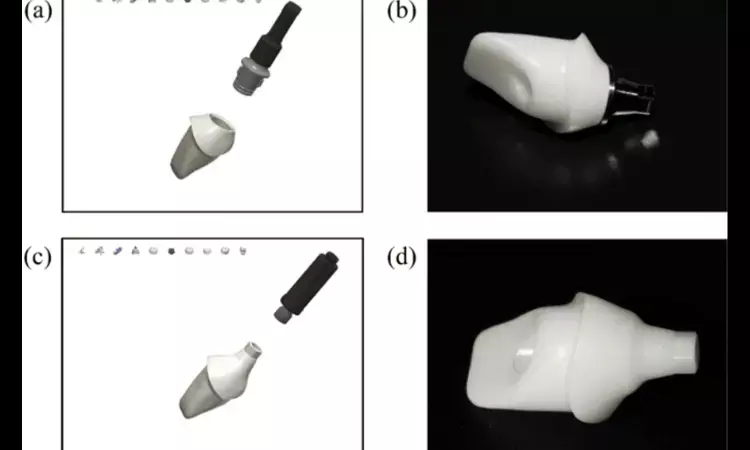- Home
- Medical news & Guidelines
- Anesthesiology
- Cardiology and CTVS
- Critical Care
- Dentistry
- Dermatology
- Diabetes and Endocrinology
- ENT
- Gastroenterology
- Medicine
- Nephrology
- Neurology
- Obstretics-Gynaecology
- Oncology
- Ophthalmology
- Orthopaedics
- Pediatrics-Neonatology
- Psychiatry
- Pulmonology
- Radiology
- Surgery
- Urology
- Laboratory Medicine
- Diet
- Nursing
- Paramedical
- Physiotherapy
- Health news
- Fact Check
- Bone Health Fact Check
- Brain Health Fact Check
- Cancer Related Fact Check
- Child Care Fact Check
- Dental and oral health fact check
- Diabetes and metabolic health fact check
- Diet and Nutrition Fact Check
- Eye and ENT Care Fact Check
- Fitness fact check
- Gut health fact check
- Heart health fact check
- Kidney health fact check
- Medical education fact check
- Men's health fact check
- Respiratory fact check
- Skin and hair care fact check
- Vaccine and Immunization fact check
- Women's health fact check
- AYUSH
- State News
- Andaman and Nicobar Islands
- Andhra Pradesh
- Arunachal Pradesh
- Assam
- Bihar
- Chandigarh
- Chattisgarh
- Dadra and Nagar Haveli
- Daman and Diu
- Delhi
- Goa
- Gujarat
- Haryana
- Himachal Pradesh
- Jammu & Kashmir
- Jharkhand
- Karnataka
- Kerala
- Ladakh
- Lakshadweep
- Madhya Pradesh
- Maharashtra
- Manipur
- Meghalaya
- Mizoram
- Nagaland
- Odisha
- Puducherry
- Punjab
- Rajasthan
- Sikkim
- Tamil Nadu
- Telangana
- Tripura
- Uttar Pradesh
- Uttrakhand
- West Bengal
- Medical Education
- Industry
Self-glazed zirconia Abutments Show Superior Fit Over Conventional Zirconia Abutments, finds study

Researchers have found in a new study that Self-glazed zirconia abutments exhibit better adaptation than conventional milled zirconia abutments at both the Ti base-abutment and implant-abutment interfaces. Additionally, the fit of one-piece Self-glazed zirconia abutments is comparable to that of prefabricated Ti-base abutments, indicating their clinical viability.
Self-glazed zirconia (SGZ), produced using a novel additive 3D gel deposition technology, has recently been employed to fabricate zirconia abutments.
This in vitro study aimed to evaluate the adaptation of one-piece and two-piece all-ceramic SGZ implant abutments in comparison to conventional milled zirconia abutments. One-piece zirconia abutments and two-piece Ti-base zirconia abutments, sharing an identical 3D design, were fabricated using self-glazed zirconia via 3D gel deposition and conventional zirconia via milling, forming four groups: SGZ-A, SGZ-Ti, Lava-A, and Lava-Ti. Marginal gaps between the zirconia abutments and Ti-base were evaluated using micro-CT data, while gaps between the abutments and implant analogs were assessed on specimen cross-sections by using a stereomicroscope. Statistical analyses were conducted using the non-parametric Mann-Whitney U and Kruskal-Wallis tests with α set at 0.05.
Results: For the two-piece zirconia abutments, the SGZ-Ti group(external gaps:31 ± 20 μm, internal gaps:4 ± 7 μm) exhibited significantly smaller marginal gaps between the zirconia abutment and the Ti-base compared to the Lava-Ti group(external gaps:79 ± 48 μm, internal gaps:51 ± 44 μm) (P<0.001).
For the one-piece zirconia abutments, the SGZ-A group(18.5 ± 5.5 μm) demonstrated a significantly smaller gap between the abutment and the implant analog compared to the Lava-A group(26.5 ± 10.0 μm) (P = 0.044). No significant difference was observed among SGZ-A, SGZ-Ti and Lava-Ti groups (P>0.05). SGZ abutments demonstrate superior adaptation compared to conventional milled zirconia abutments at both the Ti base-abutment interface and the implant-abutment interface. The adaptation of one-piece SGZ abutments is comparable to that of prefabricated Ti-base abutments.
Reference:
Li, R., Liu, Y., Sun, J. et al. Adaptation assessment of all-ceramic self-glazed versus conventional zirconia implant abutments. BMC Oral Health 25, 1158 (2025). https://doi.org/10.1186/s12903-025-06572-4
Dr. Shravani Dali has completed her BDS from Pravara institute of medical sciences, loni. Following which she extensively worked in the healthcare sector for 2+ years. She has been actively involved in writing blogs in field of health and wellness. Currently she is pursuing her Masters of public health-health administration from Tata institute of social sciences. She can be contacted at editorial@medicaldialogues.in.
Dr Kamal Kant Kohli-MBBS, DTCD- a chest specialist with more than 30 years of practice and a flair for writing clinical articles, Dr Kamal Kant Kohli joined Medical Dialogues as a Chief Editor of Medical News. Besides writing articles, as an editor, he proofreads and verifies all the medical content published on Medical Dialogues including those coming from journals, studies,medical conferences,guidelines etc. Email: drkohli@medicaldialogues.in. Contact no. 011-43720751


